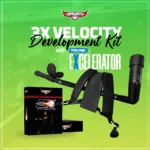 Stability and Pitching Mechanics involve the coordinated movement of various body parts, starting from the lower extremities and ending with the release of the ball. This intricate process demands precise timing and alignment, with each phase of the pitching motion building upon the previous one. The ability to harness and transfer energy efficiently from the lower body through the torso and into the throwing arm is crucial for achieving high pitch velocity and maintaining control over the ball. Any disruption in this kinetic chain can lead to suboptimal performance and an increased risk of injury.
Stability and Pitching Mechanics involve the coordinated movement of various body parts, starting from the lower extremities and ending with the release of the ball. This intricate process demands precise timing and alignment, with each phase of the pitching motion building upon the previous one. The ability to harness and transfer energy efficiently from the lower body through the torso and into the throwing arm is crucial for achieving high pitch velocity and maintaining control over the ball. Any disruption in this kinetic chain can lead to suboptimal performance and an increased risk of injury.
Stability is a foundational aspect that enables pitchers to execute these movements efficiently and effectively. It provides the necessary support for the dynamic actions required during pitching, such as the powerful push-off from the mound and the rapid rotation of the hips and torso. Proper stability ensures that the kinetic chain functions optimally, allowing for the smooth transfer of energy through the body and into the ball. This not only enhances pitch velocity but also reduces the risk of overuse injuries by minimizing compensatory movements and mechanical breakdowns. By focusing on stability and refining their mechanics, pitchers can achieve peak performance while safeguarding their health.
Lower-Body Kinematics
 Hip Strength and Range of Motion (ROM): Stability and Pitching Mechanics
Hip Strength and Range of Motion (ROM): Stability and Pitching Mechanics
Hip strength is a crucial factor in enhancing pitch velocity. Strong hip muscles provide a stable foundation, enabling pitchers to generate significant power during the pitching motion. To understand the importance of hip strength, imagine trying to throw a ball while standing on one leg versus standing firmly on both feet. The latter provides more stability and power, just as strong hips do in pitching.
The range of motion (ROM) in the hips, particularly the total arc of rotation, is also vital. ROM refers to how far the hips can move in different directions. Greater hip ROM allows pitchers to rotate their hips more effectively, contributing to higher pitch velocities. Studies have shown that professional pitchers with greater hip ROM often throw faster pitches. To improve hip ROM, exercises like leg swings and hip flexor stretches can be beneficial. These exercises help maintain flexibility and enhance the overall range of motion, enabling pitchers to achieve optimal mechanics.
 Stride Length and Width: Stability and Pitching Mechanics
Stride Length and Width: Stability and Pitching Mechanics
Stride length and width are key elements of pitching mechanics that influence pitch velocity. Stride length refers to the distance a pitcher steps forward during the pitch, while stride width is the distance between the feet when stepping. Longer strides allow pitchers to generate more momentum, which translates into greater force behind the pitch. Imagine a sprinter taking long, powerful strides versus short, quick steps; the longer strides cover more ground and build more speed.
However, the relationship between stride width and pitch velocity is more complex. While a wider stride might seem beneficial for stability, it can sometimes decrease pelvis rotation at foot contact. This reduction in rotation can affect the mechanics of the upper body, potentially leading to less efficient energy transfer and lower pitch velocities. Pitchers need to find an optimal balance in their stride width that allows for stability without compromising rotation. Drills that focus on stride mechanics, such as the stride length drill, can help pitchers experiment and find their ideal stride length and width.
 Lead Knee Flexion/Extension: Stability and Pitching Mechanics
Lead Knee Flexion/Extension: Stability and Pitching Mechanics
The lead knee's position and movement play a critical role in pitching. Flexion refers to bending the knee, while extension means straightening it. Greater lead knee extension and increased extension velocity are associated with higher pitch velocities. These movements help transfer energy from the lower body up through the torso and into the throwing arm, enhancing the overall force applied to the ball.
To visualize this, think of a high jumper's takeoff. The power generated from extending the knee propels the jumper upward. Similarly, in pitching, a powerful extension of the lead knee helps drive energy up through the body. Strengthening the muscles around the knee through exercises like squats and lunges can improve knee extension and overall pitching performance.
Pelvic and Trunk Mechanics: Stability and Pitching Mechanics
Proper pelvic and trunk mechanics are essential for effective pitching. The pelvis and trunk must work together in a coordinated manner to ensure efficient energy transfer. The separation between the pelvis and trunk, known as hip-to-shoulder separation, is a key factor in achieving high pitch velocities.
During pitching, the pelvis should rotate first, followed by the trunk. This sequential rotation creates a whip-like effect, maximizing the speed and force of the pitch. Proper mechanics involve leading pelvic rotational angles at foot contact, followed by trunk rotation. This sequence ensures that energy generated in the lower body is effectively transferred to the upper body and, ultimately, the ball.
To improve pelvic and trunk mechanics, pitchers can practice drills that focus on rotational movements, such as medicine ball throws and rotational lunges. These exercises help develop the muscles involved in rotation and improve the coordination between the pelvis and trunk.
Strength Factors
 Muscle Strength Around the Hip and Pelvis: Stability and Pitching Mechanics
Muscle Strength Around the Hip and Pelvis: Stability and Pitching Mechanics
Muscle strength around the hip and pelvis is a critical determinant of pitch velocity. These muscles are the foundation of the lower body's power generation, stability, and movement efficiency. Strengthening these muscles can enhance stability and power generation, contributing to higher pitch speeds. Focus areas include:
- Hip Extension: This movement is crucial for pushing off the mound and generating forward momentum. Exercises like hip thrusts and bridges can strengthen the gluteal muscles and hip extensors.
- Hip Flexion: Important for lifting the leg during the stride phase. Strengthening the hip flexors can be achieved through exercises like leg raises and resisted marches.
- Hip Abduction: This involves moving the leg away from the body's midline and is vital for maintaining balance and stability. Lateral leg raises and band walks are effective for targeting the abductors.
- Hip Adduction: This movement involves bringing the leg toward the midline and helps stabilize the pelvis during pitching. Exercises such as side lunges and adductor squeezes can enhance this strength.
By focusing on these areas, pitchers can improve their lower body strength, leading to more powerful and efficient pitching mechanics.
 Knee and Ankle Mobility: Stability and Pitching Mechanics
Knee and Ankle Mobility: Stability and Pitching Mechanics
Knee and ankle mobility are vital for maintaining balance and stability during pitching. Proper mobility ensures that pitchers can achieve the necessary body positions and movements without compensating with improper mechanics, which can lead to injuries. Key aspects include:
- Knee Mobility: Flexibility in the knee joint allows for proper bending and extending during the pitch. Exercises like lunges and hamstring stretches can enhance knee mobility.
- Ankle Mobility: The ankle joint plays a significant role in the push-off phase and landing stability. Improving ankle mobility can be achieved through calf stretches, ankle circles, and dorsiflexion exercises.
Maintaining good knee and ankle mobility allows pitchers to move more freely and efficiently, reducing the risk of compensatory movements that could lead to injury. Regular stretching and mobility drills should be incorporated into training routines to keep these joints flexible and functional.
 Ground Reaction Forces: Stability and Pitching Mechanics
Ground Reaction Forces: Stability and Pitching Mechanics
Ground reaction forces (GRFs) are the forces that the ground applies to the body when pitching. These forces play a crucial role in generating momentum and power. High-velocity pitchers often exhibit greater GRFs, particularly in the stride leg during the arm cocking and acceleration phases. Important considerations include:
- Stride Leg GRFs: The force exerted by the stride leg as it plants on the ground and drives forward is essential for transferring energy up through the body. Exercises that simulate and enhance this force, such as plyometrics and single-leg squats, can be beneficial.
- Push-Off Mechanics: The back leg's push-off generates initial momentum, which is crucial for the overall pitching motion. Strengthening the leg muscles through squats, deadlifts, and jump training can improve push-off power.
Understanding and optimizing GRFs can help pitchers maximize their power output and efficiency during the pitching motion. By training to enhance these forces, pitchers can achieve greater pitch velocities and overall performance on the mound. Regular assessments and adjustments to training routines based on GRF measurements can provide valuable insights into improving pitching mechanics.
Common Injuries and Prevention
 Shoulder and Elbow Injuries: Stability and Pitching Mechanics
Shoulder and Elbow Injuries: Stability and Pitching Mechanics
Shoulder and elbow injuries are common among pitchers due to the repetitive and high-stress nature of the pitching motion. The shoulder, being the most mobile joint in the body, is susceptible to various injuries, especially with the repetitive overhead motions required in pitching. Similarly, the elbow endures significant stress, particularly during the late cocking and acceleration phases of the pitch. Common injuries include:
- Rotator Cuff Tears: The rotator cuff is a group of muscles and tendons that stabilize the shoulder joint. Tears in these tendons can occur due to overuse or acute trauma, leading to pain and reduced range of motion.
- Labrum Tears: The labrum is a ring of cartilage that surrounds the shoulder socket and helps stabilize the joint. Tears can result from repetitive shoulder movements or acute injuries, causing pain and instability.
- Ulnar Collateral Ligament (UCL) Injuries: The UCL is crucial for elbow stability, especially during the high-velocity throwing motion. UCL injuries, including tears, are common and often require significant rehabilitation or surgery (such as Tommy John surgery).
Prevention strategies for these injuries focus on maintaining proper mechanics, engaging in comprehensive strength training, and ensuring adequate rest. Specific exercises to strengthen the rotator cuff and surrounding shoulder muscles, as well as the forearm and elbow stabilizers, can help mitigate the risk of these injuries. Additionally, pitchers should focus on flexibility exercises to maintain shoulder and elbow mobility and incorporate proper warm-up and cool-down routines to prepare the muscles and joints for the stresses of pitching.
 Lower-Body Injuries: Stability and Pitching Mechanics
Lower-Body Injuries: Stability and Pitching Mechanics
Lower-body injuries, such as hip impingements, knee tendinitis, and ankle sprains, can also affect pitchers. These injuries often result from improper mechanics, overuse, or a lack of adequate conditioning. Key lower-body injuries include:
- Hip Impingements: This condition occurs when there is abnormal contact between the hip bones, leading to pain and restricted movement. It can result from repetitive hip flexion during pitching.
- Knee Tendinitis: Inflammation of the tendons around the knee, often due to overuse or improper mechanics, can cause significant pain and impair performance.
- Ankle Sprains: Ankle injuries, particularly sprains, can occur due to sudden movements or instability during the pitching motion.
Preventive measures for lower-body injuries include regular strengthening exercises targeting the hip, knee, and ankle muscles. Flexibility training, such as stretching and mobility drills, can help maintain joint health and prevent stiffness. Proper warm-up routines that gradually increase in intensity are crucial for preparing the lower body for the demands of pitching.
Prevention Strategies: Stability and Pitching Mechanics
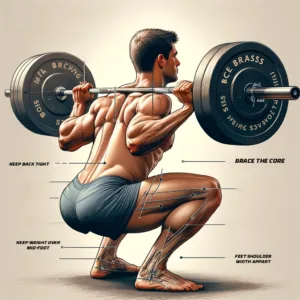 Effective prevention strategies involve a comprehensive approach that combines strength training, flexibility exercises, and proper pitching mechanics. Emphasizing lower-body strength and stability can significantly reduce the risk of upper-body injuries, as a stable lower body provides a solid foundation for the entire pitching motion. Key strategies include:
Effective prevention strategies involve a comprehensive approach that combines strength training, flexibility exercises, and proper pitching mechanics. Emphasizing lower-body strength and stability can significantly reduce the risk of upper-body injuries, as a stable lower body provides a solid foundation for the entire pitching motion. Key strategies include:
- Strength Training: Incorporate exercises that target both the upper and lower body, focusing on muscle groups involved in pitching. Core strength is also crucial for maintaining stability and transferring energy efficiently through the kinetic chain.
- Flexibility Exercises: Regular stretching routines for the shoulders, hips, knees, and ankles help maintain a full range of motion and prevent stiffness. Yoga and dynamic stretching can be particularly beneficial.
- Proper Mechanics: Ensuring that pitchers use correct pitching mechanics is essential for minimizing undue stress on the body. This can involve regular video analysis and feedback from coaches to correct any mechanical flaws.
- Adequate Rest and Recovery: Pitchers need sufficient rest between pitching sessions to allow the muscles and joints to recover. Adhering to pitch count guidelines and taking regular breaks can help prevent overuse injuries.
- Warm-Up and Cool-Down Routines: Properly warming up before pitching and cooling down afterward can prepare the muscles and joints for activity and aid in recovery.
By following these strategies, pitchers can maintain their health and performance over the long term, reducing the risk of common injuries associated with the sport. Regular assessment and adjustment of training routines based on individual needs and responses can further enhance injury prevention efforts.
Training Techniques with TopVelocity
TopVelocity offers a comprehensive approach to enhancing pitching performance through its science-backed programs. One of the cornerstone programs is the 3X Pitching Velocity Program, designed to develop stability, strength, and velocity in pitchers. This program integrates various training techniques that focus on the biomechanics of pitching, strength conditioning, and injury prevention.
 The 3X Pitching Velocity Program
The 3X Pitching Velocity Program
The 3X Pitching Velocity Program is specifically tailored to improve a pitcher's overall performance by focusing on three primary components: power, stability, and speed. The program is structured to address the kinetic chain from the ground up, ensuring that each phase of the pitching motion is optimized for maximum efficiency and effectiveness.
Key Components of the 3X Pitching Velocity Program:
- Power Development
- Strength Training: The program emphasizes full-body strength training, with a particular focus on the lower body and core. Exercises such as squats, deadlifts, and Olympic lifts are incorporated to build explosive power. These exercises help pitchers generate greater force from the ground, which is crucial for velocity.
- Plyometric Training: Plyometrics are used to enhance the ability to produce powerful, explosive movements. Box jumps, medicine ball throws, and bounding drills are examples of exercises that improve the rapid force production necessary for pitching.
- Stability and Mobility
- Core Stability: Core exercises such as planks, Russian twists, and medicine ball slams are integral to the program. A strong core stabilizes the body during the pitching motion, allowing for efficient energy transfer from the lower body to the upper body.
- Hip and Shoulder Mobility: The program includes dynamic stretches and mobility drills to maintain and improve the range of motion in the hips and shoulders. This mobility is essential for achieving the proper mechanics and reducing the risk of injury.
- Speed and Mechanics
- Mechanics Drills: The 3X program places a strong emphasis on proper pitching mechanics. Drills are designed to reinforce the correct sequence of movements, from the initial leg drive to the release of the ball. Video analysis and biomechanical feedback are often used to ensure pitchers are executing techniques correctly.
- Speed Training: Techniques to improve arm speed and overall pitching velocity are incorporated. This includes drills that focus on the rapid movement of the arm and wrist, enhancing the pitcher's ability to deliver fast pitches consistently.
 Developing Stability and Strength
Developing Stability and Strength
The 3X Pitching Velocity Program is meticulously crafted to develop both stability and strength, which are crucial for any pitcher looking to enhance their performance. Here’s how the program targets these areas:
- Lower Body Strength: Exercises such as squats and deadlifts focus on building strength in the legs and hips. This strength provides a stable base from which pitchers can generate power. The lower body is responsible for the initial force generation in the pitching motion, and strengthening these muscles ensures that this force is maximized and efficiently transferred through the kinetic chain.
- Core Stability: A stable core acts as a conduit for transferring energy from the lower body to the upper body. By incorporating a variety of core exercises, the program ensures that pitchers have the stability needed to maintain proper posture and alignment throughout the pitching motion. This stability reduces the risk of compensatory movements that can lead to injuries.
- Flexibility and Mobility: Maintaining flexibility in the hips and shoulders is crucial for proper pitching mechanics. The program includes mobility drills that keep these areas flexible, allowing pitchers to achieve the necessary range of motion. This flexibility not only enhances performance but also helps in injury prevention by reducing stress on the joints.
- Biomechanical Efficiency: The program's focus on proper mechanics ensures that pitchers use their bodies efficiently. By optimizing each phase of the pitching motion, pitchers can throw with greater velocity and accuracy while minimizing the risk of injury. Mechanics drills and video analysis help identify and correct any flaws, ensuring that pitchers can perform at their best.
The 3X Pitching Velocity Program is a holistic approach that integrates strength training, stability exercises, and mechanical optimization to help pitchers achieve their full potential. By focusing on these key areas, TopVelocity ensures that pitchers not only improve their performance but also maintain long-term health and durability on the mound.
Conclusion
In summary, lower-body kinematics and strength are vital components of effective pitching mechanics. Focusing on hip strength, stride length, and proper pelvic and trunk mechanics can significantly impact pitch velocity and reduce the risk of injury. By incorporating targeted training techniques and leveraging advanced technology for analysis, pitchers at all levels can optimize their performance and longevity in the sport.
Reference:
Manzi, J. E., Jonathan, S. Y., Sudah, S. Y., Wishman, M., Quan, T., Koo, A., ... & Dines, J. S. (2023). A Systematic Review of Lower-Body Kinematic and Strength Factors Associated With Pitch Velocity in Adult Baseball Pitchers. Journal of Sport Rehabilitation, 32(4), 440-448.
For more exclusive content visit the TopVelocity Patreon!


 Hip Strength and Range of Motion (ROM): Stability and Pitching Mechanics
Hip Strength and Range of Motion (ROM): Stability and Pitching Mechanics Stride Length and Width: Stability and Pitching Mechanics
Stride Length and Width: Stability and Pitching Mechanics Lead Knee Flexion/Extension: Stability and Pitching Mechanics
Lead Knee Flexion/Extension: Stability and Pitching Mechanics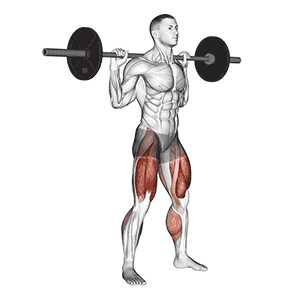 Muscle Strength Around the Hip and Pelvis: Stability and Pitching Mechanics
Muscle Strength Around the Hip and Pelvis: Stability and Pitching Mechanics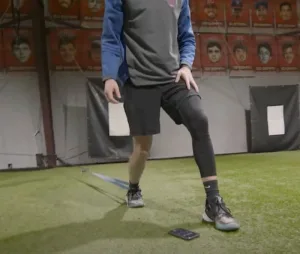 Knee and Ankle Mobility: Stability and Pitching Mechanics
Knee and Ankle Mobility: Stability and Pitching Mechanics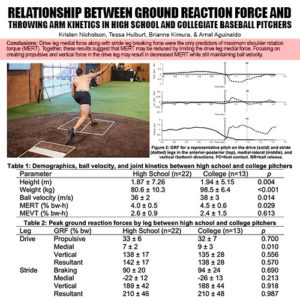 Ground Reaction Forces: Stability and Pitching Mechanics
Ground Reaction Forces: Stability and Pitching Mechanics Shoulder and Elbow Injuries: Stability and Pitching Mechanics
Shoulder and Elbow Injuries: Stability and Pitching Mechanics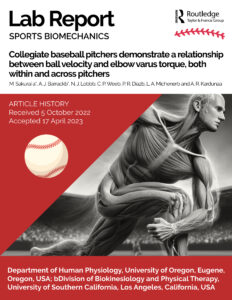 Lower-Body Injuries: Stability and Pitching Mechanics
Lower-Body Injuries: Stability and Pitching Mechanics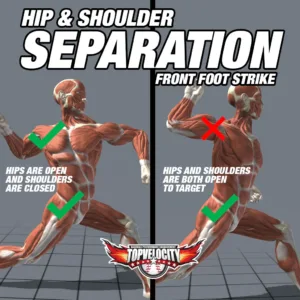 The 3X Pitching Velocity Program
The 3X Pitching Velocity Program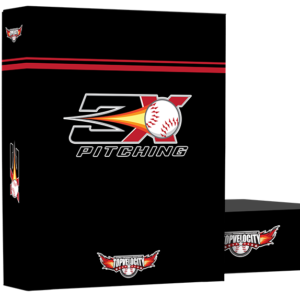 Developing Stability and Strength
Developing Stability and Strength
